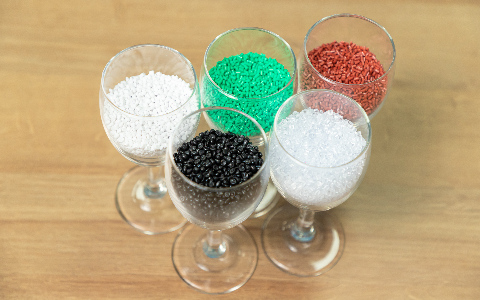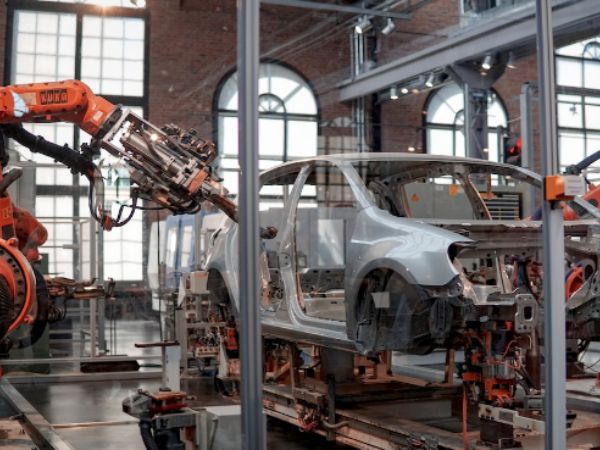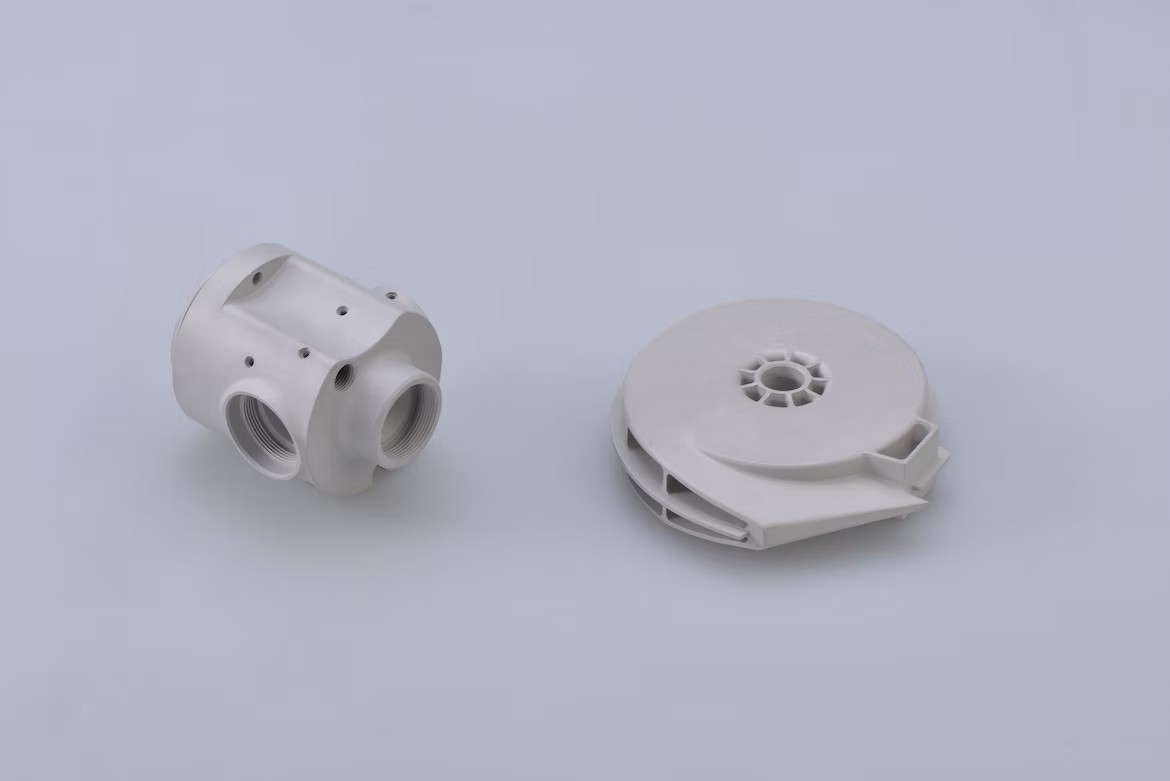Medical devices stand apart from regular equipment. They’re unique tools that either go inside the human body or touch it directly. It’s imperative, then, that they’re made of biocompatible materials. Not sure what that means? Biocompatible materials are those that won’t harm or cause negative reactions in the body. Their existence is central to ensuring the efficacy and safety of medical devices for long-term application.
How Does the Biocompatibility of Materials Contribute to Patient Comfort and Satisfaction?
Truth be told, having something foreign inside our body isn’t a pleasant thought. Enter biocompatible materials. These are tailored to be as compatible with the human body as can be.
Such materials, including polymers, ceramics, and metals, are intricately designed to coexist with our body’s environment. They’re the transformers of the medical arena, adjusting based on their context. Biocompatible plastics in catheters, for example, are designed to be bendy and smooth, lessening pain and infection risks. Dental implants crafted from biocompatible metals like titanium have properties similar to natural teeth, facilitating eating and talking.
But comfort is just one part; peace of mind is another. Devices made from biocompatible materials minimize the risk of unwanted reactions. This means fewer medical visits, saving you hassle and anxiety. Ideally, the less a medical device is on your mind, the better.
In essence, biocompatible materials are the behind-the-scenes stars that make medical devices more than just manageable but truly pleasant. They play a role in enhancing well-being and overall happiness, making medical procedures less intimidating.
How Do Biocompatible Materials Interact with the Human Body Over Time?
Upon entering the human body, biocompatible materials engage dynamically with the biological surroundings. This engagement, termed biocompatibility, is pivotal in medical device creation. Over time, these materials experience molecular interactions with proteins adhering to their surface.
They can also trigger a foreign body reaction, possibly causing inflammation. Furthermore, they blend with adjacent tissues, aiding in regeneration. Some might degrade, influencing the body’s reaction. The specifics of these interactions are contingent on the material and its use, emphasizing the importance of tailored material selection. SeaskyMedical is good at choosing the right material for manufacturing medical devices If you need any help, please contact us.
Why Biocompatible Materials are Essential for Patient Safety?
Biocompatible materials are indispensable for ensuring patient safety, and here are the reasons:
- They refrain from causing any negative local or systemic reactions, preserving the integrity of the patient’s body.
- The chance of them inducing cell destruction or toxicity is low, which is fundamental for the vitality of the patient’s cells.
- Recognized as safe, trustworthy, and fit for medical use, they steer clear of causing any detrimental effects.
- Thorough biocompatibility checks during the crafting and production of medical tools are essential to gauge potential threats and affirm their safety.
- They amplify the efficacy of medical treatments, ensuring the best possible outcomes for patients. Collectively, biocompatible materials stand out as vital for patient safety, ensuring that medical tools and treatments are both benign and effective.
In essence, biocompatible materials are the guardians of patient safety. They ensure that medical devices do their job without adding new problems to the mix. After all, what’s the point of a solution that causes more issues than it solves?
Types of Biocompatible Materials
Biomaterials, whether derived from nature or crafted synthetically, interact with biological systems for a range of medical endeavors, from dental treatments to surgeries and drug administration. The industry’s valuation is set to hit $725.88 billion by 2031. These materials can be broken down into seven distinct classes:
- Metallic Compounds: Integral for implants and surgical procedures, especially in the cardiovascular and orthopedic sectors.
- Polymeric Materials: Appreciated for their cost-effectiveness and chemical robustness, they’re found in implants, vascular grafts, and dressings.
- Ceramic Materials: Their high biocompatibility is a plus, but their brittleness restricts them mainly to dental and bone prosthetics.
- Natural Derivatives: Extracted from sources like silk and cellulose, they’re pivotal in tissue rejuvenation and drug delivery platforms.
- Glass-Based Substances: They’re the go-to for dental fixes and hard tissue replacements.
- Restorative Materials: Their forte is tissue engineering, particularly in the realm of bone and joint refurbishments.
- Mixed Biomaterials: Blending natural and man-made elements, they’re crucial in the spheres of tissue engineering and regenerative treatments.
Each class boasts its unique strengths and applications, with research continually broadening their horizons.
How Do ISO 10993 and USP Class VI Standards Ensure Biocompatibility of Medical Devices
Both ISO 10993 and USP Class VI serve as benchmarks for biocompatibility testing, ensuring materials are safe for human interaction. However, their testing blueprints differ. ISO 10993, ISO is for international organization for standardization, a detailed 20-part standard, that scrutinizes the relationship between medical device materials and the human body.
Its foundational part outlines the core principles of good biocompatibility testing, covering a spectrum of tests. In contrast, USP Class VI, a U.S. Pharmacopeia standard, zeroes in on the biocompatibility of plastics and polymers in medical instruments. While it’s a foundational standard, some devices may require more in-depth testing than USP Class VI provides. ISO-10993, with its extensive testing parameters, is crucial for devices designed for implantation.
For other devices, ISO-10993 might be more than what’s needed. The end-use of the material always guides its selection.
| Test | Extracts | USP Class | |||||
| I | II | III | IV | V | VI | ||
| Systemic injection test – injection in test model 1 | Sodium chloride (intravenous) | X | X | X | X | X | X |
| Alcohol saline (intravenous) | X | X | X | X | X | ||
| Polyethylene glycol (intraperitoneal) | X | X | X | ||||
| Vegetable oil (intraperitoneal) | X | X | X | X | |||
| Intracutaneous test – injection in test model 2 | Sodium chloride (intravenous) | X | X | X | X | X | X |
| Alcohol saline (intravenous) | X | X | X | X | X | ||
| Polyethylene glycol (intraperitoneal) | X | X | |||||
| Vegetable oil (intraperitoneal) | X | X | X | ||||
| Implantation test – strips implanted in test model 2 | None | X | X | ||||
In Vitro Testing: The First Line of Safety Assessment
In vitro testing conducted in a lab setting, these tests exposes cells or surrounding tissue to the material under scrutiny.
One of the advantages of in vitro tests is their speed and cost-effectiveness. They offer insights into issues like cytotoxicity and inflammation without the ethical concerns of using animals or humans.
However, in vitro tests are not without their shortcomings. They can’t capture the full intricacy of human physiology, which is why they’re usually followed by in vivo tests and clinical studies. Nonetheless, they serve as an invaluable initial filter in evaluating material biocompatibility.
Analytical Chemistry: Predicting Toxicity Levels
Chemistry acts as the guardian of biocompatible materials, predicting toxicity levels to ensure they’re safe once inside the human body.
It employs a range of methods to scrutinize material safety, identifying and quantifying any substances that could potentially leach into the body—much like checking a food label for allergens.
But it’s not solely about flagging toxins; it’s also about understanding their biological behavior. Some substances may be safe in moderation but toxic in excess.
In a nutshell, analytical chemistry is a linchpin in biocompatibility testing, serving as a last line of defense against potential hazards.
Animal Testing: Controversial but Sometimes Necessary
Animal testing often provokes intense debates, yet it sometimes becomes an unavoidable step in biocompatibility testing.
Animals offer a more intricate biological framework that can more accurately simulate human reactions. The comparison is akin to contrasting a virtual reality game with real-life experiences—both are useful, but one is more authentic.
For example, some materials may appear safe in lab tests but provoke unforeseen reactions in living beings. Animal trials can flag these issues before they advance to human studies.
Nonetheless, it’s important to recognize that efforts are ongoing to find humane alternatives to animal testing. The ultimate aim is to minimize, refine, and ultimately substitute these tests with methods that are both ethical and effective.
Bioinert vs. Bioactive vs. Biotolerant: Understanding the Terminology
Biocompatible materials are tailored to coexist with biological systems for therapeutic purposes. They can be broadly segmented into bioinert, bioactive, and biotolerant classes. Here’s a snapshot of each:
Bioinert: These materials remain neutral when implanted in the human body, having minimal tissue interaction. They’re the go-to for long-term implants like dental solutions, bone grafts, and prosthetic limbs.
Bioactive: Engaging in a localized physiological activity, these materials bond with adjacent tissues. They’re preferred for applications like bone grafts, tissue scaffolds, and drug delivery platforms.
Biotolerant: These materials are neutral, neither harming nor bonding with tissues. They’re ideal for temporary implants such as catheters and surgical implements. However, it’s essential to recognize that these classifications can be fluid, depending on the specific scenario and purpose. The choice of material is always tailored to its intended function.
Challenges in Material Selection: Balancing Functionality and Safety
Picking the appropriate biocompatible material is comparable to selecting the ideal footwear for a specific activity. It must be fit for the purpose, comfortable, and above all, safe.
Different medical devices have varying specific requirements. A spinal implant, for example, needs to be both rigid and flexible, while a glucose monitor must be sensitive and stable. But it’s not just about effectiveness; safety is a non-negotiable. The material must not only fulfill its intended role but also be compatible with the body’s biology. It’s a balancing act on a razor’s edge.
Moreover, the unpredictability of the human body adds another layer of complexity. Even materials that have undergone extensive testing can sometimes trigger unexpected reactions.
Keeping current with clinical trial results, staying informed about the latest scientific developments, and continuously revisiting material choices are all part of this ongoing journey. It’s an endless cycle of adaptation and learning, all in the pursuit of the perfect balance between efficiency and safety.
How Do Biocompatible Materials Impact the Cost of Medical Devices?
Biocompatible substances are non-living materials employed in medical gadgets that interact with biological entities. In the field of orthopedics, biocompatibility is a non-negotiable requirement for the clinical application of these materials. This refers to the material’s capability to carry out its role without inducing harmful or toxic reactions in biological systems, while also eliciting an appropriate response from the host in particular cases.
The modern understanding of biocompatibility encompasses not just bio-inertia but also biofunctionality and biostability. A large proportion of medical devices are influenced by biocompatibility issues. The price tag for biocompatibility evaluations can span from $25,000 to $100,000 according the further research, making it a significant line item in a project’s budget. If the blueprint of a medical device includes hard-to-source or rare materials, alternative strategies may be required, which would affect the device’s price point. The surging global demand for medical implants and devices is propelling the use of biocompatible materials.
To sum up, the necessity for biocompatible materials has a direct impact on the cost structure of medical devices, mainly because of the mandatory biocompatibility testing, which can be a hefty expenditure in the R&D budget. Additionally, the limited availability of specific materials may require alternative options, thereby influencing the device’s cost. However, the rising global appetite for medical implants and devices is accelerating the adoption of biocompatible materials.
Modern Medicine and Biocompatible Materials: From 3D Printing to Tissue Engineering Scaffolds
Modern medicine has seen revolutionary advancements in materials and their specific application, especially in wound healing and regenerative medicine. Biocompatible materials, like titanium alloys and polymer composites, are designed for specific needs.
A major challenge is preventing corrosion when these materials contact host tissue, which can compromise devices like stents. Austenitic stainless steels and titanium alloys, known for corrosion resistance, are preferred. Their surfaces can be adjusted for optimal biocompatibility.
Regulatory bodies have set guidelines ensuring material safety in various medical applications. Innovations like 3D printing expand treatment possibilities, from wound healing scaffolds to antimicrobial prostheses. While the potential is vast, challenges in long-term tissue interaction persist. As we balance innovation and safety, the journey of biocompatible materials in medicine continues, promising a healthier future.
Choosing SeaskyMedical Manufacturing Partner for Biocompatible
For the production of biocompatible medical devices, partnering with the right entity is essential. SeaskyMedical is a standout in this landscape, celebrated for its high-quality biocompatible device manufacturing. Our two decades of hands-on experience from material selection to production, ensure the utmost safety and functionality of every device.
Engaging with a reputable firm like SeaskyMedical guarantees devices crafted from elite biocompatible materials while meeting the regulatory criteria. It’s a collaboration that assures both excellence and compliance.




